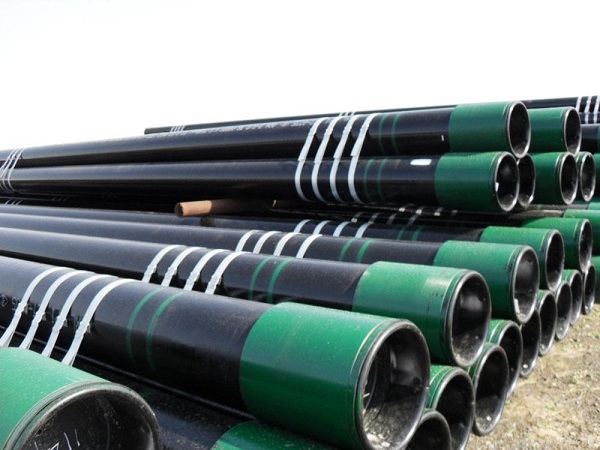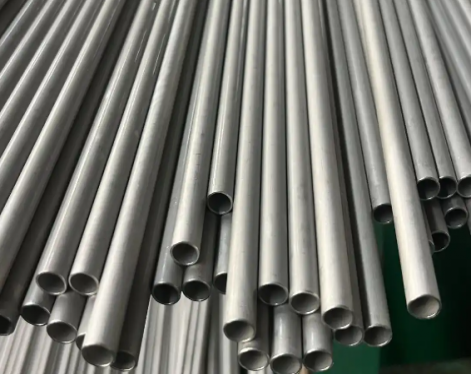What is the steel casing pipe?
Steel casing pipe is a steel pipe used to support the well wall of oil and gas wells to ensure the normal operation of the entire oil well during the drilling process and after completion. Each well uses several layers of casing based on different drilling depths and geological conditions. Cement must be used to cement the casing after it is lowered into the well. Unlike oil pipes and drill pipes, it cannot be reused and is a one-time consumable material. Therefore, the consumption of casing accounts for more than 70% of all oil well pipes.
According to the function of steel casing pipe, it can be divided into surface casing, technical casing and oil layer casing.
1. Surface casing
(1) Used to plug the upper unstable, soft, prone to collapse, and leaking strata and water layers;
(2) Install wellhead devices to control blowouts;
(3) Support part of the weight of technical casing and reservoir casing.

The depth of the surface casing depends on the specific conditions and is usually tens to hundreds of meters or deeper (30 to 1500 meters). The extracorporeal cement is usually placed back on the ground. When drilling a high-pressure gas well, if the upper rock layer is loose and fractured, the surface layer needs to be deeper in order to prevent high-pressure gas from flowing out of the surface. If deeper surface casing is required, the lower layers of the pipe should be considered before surface casing if the first drilling time is longer. Its function is to seal the ground, prevent the wellhead from collapsing, and form a drilling fluid circulation channel to facilitate long-term drilling. The depth of the conduit is usually 20 to 30 meters, and the cement on the outside of the conduit returns to the ground.
2. Technical casing
(1) Used to seal complex formations, severe loss layers, and oil, gas, water and water layers that are difficult to control with drilling fluids, and prevent diameter expansion.
(2) In high-inclination directional wells, insert casing under this part to facilitate safe drilling of directional wells.
(3) Provide conditions for the installation of tail pipes of well control equipment to prevent blowouts, leakage and suspension, and protect steel casing pipes.
3. Oil layer casing
Used to separate target layers from other layers; separate oil and gas layers under different pressures, and establish oil and gas channels in oil wells to ensure long-term production. The depth of the reservoir casing depends on the depth of the target layer and the completion method. The cement slurry from the oil layer casing usually returns to the upper oil layer more than 100 meters. For high-pressure wells, the cement slurry should be transported back to the surface, which is beneficial to strengthening the casing and reinforcing the steel casing pipe wire buckle so that it can withstand greater cutting pressure.
Steel casing pipe anti-corrosion
The anti-corrosion of steel casing pipe is mainly divided into:
1. Apply anti-corrosion coating on the outer wall to reduce external erosion.
2. Apply anti-corrosion coating on the inner wall to reduce friction, reduce corrosion in the pipe, and increase oil transportation.
3. Apply anti-corrosion and cooling coating to transport crude oil and fuel oil and reduce the heat dissipation from the pipeline to the soil.
Steel casing pipe is a steel pipe used to support the well wall of oil and gas wells to ensure the normal operation of the entire oil well during the drilling process and after completion. Each well uses several layers of casing based on different drilling depths and geological conditions. Cement must be used to cement the casing after it is lowered into the well. Unlike oil pipes and drill pipes, it cannot be reused and is a one-time consumable material. Therefore, the consumption of casing accounts for more than 70% of all oil well pipes.
According to the function of steel casing pipe, it can be divided into surface casing, technical casing and oil layer casing.
1. Surface casing
(1) Used to plug the upper unstable, soft, prone to collapse, and leaking strata and water layers;
(2) Install wellhead devices to control blowouts;
(3) Support part of the weight of technical casing and reservoir casing.

The depth of the surface casing depends on the specific conditions and is usually tens to hundreds of meters or deeper (30 to 1500 meters). The extracorporeal cement is usually placed back on the ground. When drilling a high-pressure gas well, if the upper rock layer is loose and fractured, the surface layer needs to be deeper in order to prevent high-pressure gas from flowing out of the surface. If deeper surface casing is required, the lower layers of the pipe should be considered before surface casing if the first drilling time is longer. Its function is to seal the ground, prevent the wellhead from collapsing, and form a drilling fluid circulation channel to facilitate long-term drilling. The depth of the conduit is usually 20 to 30 meters, and the cement on the outside of the conduit returns to the ground.
2. Technical casing
(1) Used to seal complex formations, severe loss layers, and oil, gas, water and water layers that are difficult to control with drilling fluids, and prevent diameter expansion.
(2) In high-inclination directional wells, insert casing under this part to facilitate safe drilling of directional wells.
(3) Provide conditions for the installation of tail pipes of well control equipment to prevent blowouts, leakage and suspension, and protect steel casing pipes.
3. Oil layer casing
Used to separate target layers from other layers; separate oil and gas layers under different pressures, and establish oil and gas channels in oil wells to ensure long-term production. The depth of the reservoir casing depends on the depth of the target layer and the completion method. The cement slurry from the oil layer casing usually returns to the upper oil layer more than 100 meters. For high-pressure wells, the cement slurry should be transported back to the surface, which is beneficial to strengthening the casing and reinforcing the steel casing pipe wire buckle so that it can withstand greater cutting pressure.
Steel casing pipe anti-corrosion
The anti-corrosion of steel casing pipe is mainly divided into:
1. Apply anti-corrosion coating on the outer wall to reduce external erosion.
2. Apply anti-corrosion coating on the inner wall to reduce friction, reduce corrosion in the pipe, and increase oil transportation.
3. Apply anti-corrosion and cooling coating to transport crude oil and fuel oil and reduce the heat dissipation from the pipeline to the soil.
Previous:Welding of octg casing









